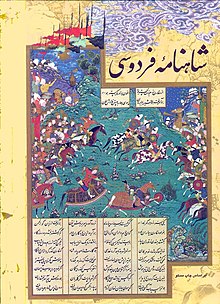This article includes a list of general references, but it lacks sufficient corresponding inline citations. (October 2022) |
Ṣaḥāba | |
|---|---|
 Muhammad and his companions (Ottoman era) | |
| Personal | |
| Religion | Islam |
| Other names | Companions of the Prophet |
| Muslim leader | |
| Period in office | Early Islamic period Late antiquity |


The Companions of the Prophet (Arabic: اَلصَّحَابَةُ, romanized: aṣ-ṣaḥāba, lit. 'the companions') were the disciples and followers of Muhammad who saw or met him during his lifetime, while being a Muslim and were physically in his presence.[1]
Later Islamic scholars accepted their testimony of the words and deeds of Muhammad, the occasions on which the Quran was revealed and other important matters in Islamic history and practice. The testimony of the companions, as it was passed down through trusted chains of narrators (asānīd), was the basis of the developing Islamic tradition. From the traditions (hadith) of the life of Muhammad and his companions are drawn the Muslim way of life (sunnah), the code of conduct (sharia) it requires, and Islamic jurisprudence (fiqh).
The two largest Islamic denominations, the Sunni and Shia, take different approaches to weighing the value of the companions' testimonies, have different hadith collections and, as a result, have different views about the ṣaḥābah.[2]
The second generation of Muslims after the ṣaḥāba, born after the death of Muhammad, who knew at least one ṣaḥāba, are called Tābi'ūn (also "the successors"). The third generation of Muslims after the Tābi'ūn, who knew at least one Tābi, are called tābi' al-tābi'īn.[3] The three generations make up the salaf of Islam.
- ^ Encyclopaedia Britannica (2008). Britannica Concise Encyclopedia. Encyclopaedia Britannica, Inc. p. 441. ISBN 978-1-59339-492-9.
- ^ Cite error: The named reference
britannicawas invoked but never defined (see the help page). - ^ Esposito, John L. (2003). The Oxford Dictionary of Islam. Oxford University Press. p. 301. ISBN 9780195125597. Retrieved 9 March 2019.